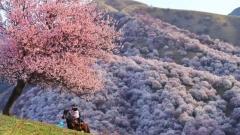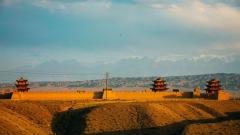Exploring Xinjiang offers a breathtaking combination of sweeping desert landscapes, soaring mountain peaks, and vibrant cultural exchanges. Beyond its natural wonders, Xinjiang is a treasure trove of authentic products – perfect for food lovers, handicraft collectors, and anyone seeking unique gifts. Below, discover ten must-try Xinjiang specialties, where to find them, and essential tips for a seamless shopping experience. For personalized itineraries, expert advice, and hassle-free arrangements, feel free to reach out to China Dragon Travel.
1. Hetian Jade: China’s Beloved “White Gold”
Hetian Jade (often called “Hetian White Jade”) ranks among China’s four most prestigious jades. Mined exclusively in the Kunlun Mountains near Hotan (Hetian) in southern Xinjiang, this gemstone is renowned for its buttery texture, milky translucence, and warm luster. Purists prize the snow-white “mutton-fat” jade for its rarity and smooth, almost wax-like feel against the skin. Other variants—such as greenish or yellowish jade—also hold significant cultural value.
Why It Stands Out
- Rarity & Prestige: Only Hetian region yields this high-grade nephrite.
- Historical Significance: Archaeological finds trace its use back thousands of years—stone axes, ceremonial pieces, and Buddhist sculptures.
- Versatility: Artisans transform raw jade into bracelets, pendants, seals, and intricate sculptures.
When shopping for Hetian Jade, inspect color consistency, translucence, and surface texture. Legitimate sellers will offer certificates of authenticity. To witness jade carving firsthand or visit local mines, consider booking a tailored Cultural Heritage Tour with China Dragon Travel.

Xinjiang Hetian Jade
2. Turpan Grapes: Sun-Kissed Gems of the Desert
Turpan, dubbed the “Land of Grapes,” thrives in China’s lowest irrigation basin. With over 3,000 hours of annual sunshine and extreme day-night temperature swings, the grapes here ripen into plump, syrupy jewels. Turpan cultivates more than 500 varieties – seedless whites, ruby-red, jet-black, and aromatic “Rosy Fragrance”—earning its reputation as the “World’s Vineyard.”
Highlights & Products
- Fresh Grapes: Crisply sweet, bursting with juice, harvested July through September.
- Dried Raisins: Sun-dried on “grape dryers” (agzi), retaining concentrated sugar and chewiness.
- Grape Wine & Vinegar: Local wineries craft fruity reds and dessert wines; artisanal vinegar adds a tangy depth to sauces.
Ideal visit times fall between midsummer and early autumn. For an immersive experience—grape-picking under the scorching sun, touring drying chambers, and sampling barrel-fermented wines – let China Dragon Travel arrange a Turpan Vineyard Excursion.
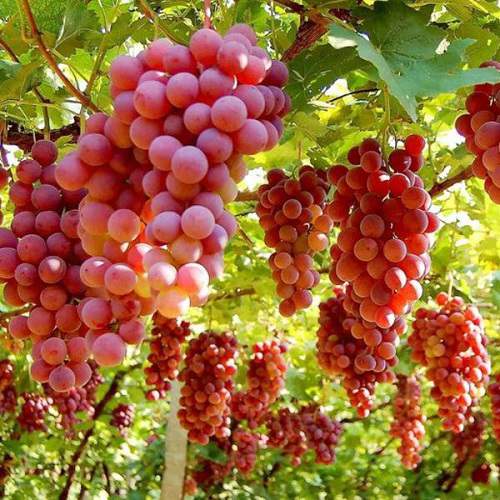
Turpan Grapes
3. Hami Melons: The Ultimate Summer Treat
Hami Melon, originating from the city of Hami, takes Xinjiang’s produce crown for its aroma and sugar content. Nutrient-rich soil, abundant sunlight, and cool nights help these melons develop thick, golden skins and succulent, aromatic flesh. Varieties range from ivory-green to sunset-gold, with flesh hues spanning pale orange, jade green, and cream.
Key Points
- Peak Season: Mid-July to late August—taste before shipping if possible.
- Flavor Profile: Exceptionally juicy, with a honeyed sweetness and fragrant scent.
- Culinary Uses: Fresh slicing, chilled melon juice, sorbets, and fruit salads.
If you want to walk among the vine-covered fields and sample melons straight from the patch, China Dragon Travel can curate a Hami Harvest Tour. Local farmers often invite guests to join melon tastings and explain traditional cultivation methods.
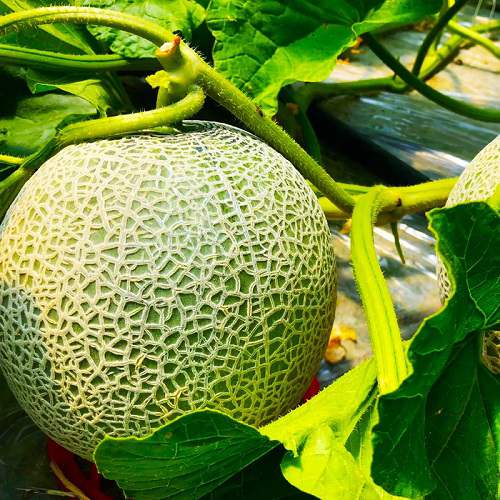
Xinjiang Hami Melons
4. Xinjiang Carpets: Handwoven Masterpieces
Xinjiang carpet-making traces back over 2,000 years, reflecting a fusion of Silk Road influences—Persian, Central Asian, and Han Chinese. Crafted by Uyghur, Kazakh, and Kyrgyz weavers, these rugs showcase intricate geometric patterns, stylized flora, and symbolic motifs. Premium carpets use high-grade wool from local sheep, sometimes interwoven with silk to highlight vivid dyes.
What Sets Them Apart
- Artistry & Craftsmanship: Every knot is hand-tied; some large rugs take artisans six months to complete.
- Distinct Regional Styles: Kashgar designs favor bold reds and turquoises; Ili carpets feature softer palettes and pastoral scenes.
- Durability & Warmth: Dense pile provides insulation during harsh winters, making them functional decor.
For collectors, a genuine Xinjiang carpet is both investment and heirloom. To learn weaving traditions, arrange a Village Weaving Workshop through China Dragon Travel, where master weavers demonstrate shearing sheep, dyeing wool with natural pigments, and setting up looms.
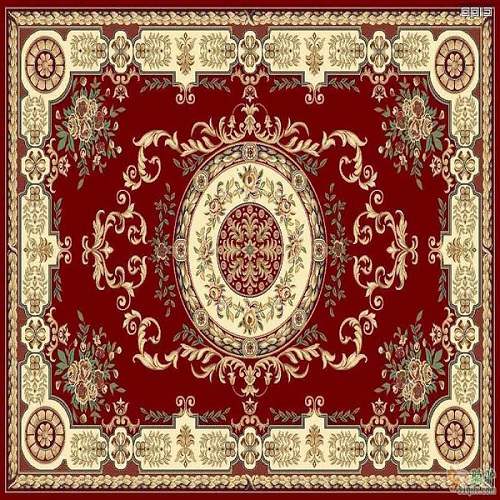
Xinjiang Carpets
5. Hotan Jujubes: Nature’s Sweet “Red Jewels”
Hotan (Hetian) Jujubes—known locally as “Hetian Sword Dates”—are prized for plumpness, tender flesh, and rich sweetness. Cultivated in the oasis-fed valleys near the Kunlun Range, these jujubes benefit from ample sun and cool mountain breezes, which ensure high sugar levels and an almost creamy texture.
Nutritional & Cultural Value
- Health Benefits: Rich in vitamins C, B complex, iron, and dietary fiber; believed to nourish blood, calm the mind, and boost immunity.
- Culinary Versatility: Eaten fresh, dried into chewy jujube snacks, brewed into teas, or used as sweeteners in pastries and congee.
Mid-September through October is prime harvesting season. To gain insights into traditional sun-drying methods and visit family-run orchards, book a Jujube Valley Experience with China Dragon Travel, which includes tasting sessions and doorstep deliveries of freshly packed jujubes.
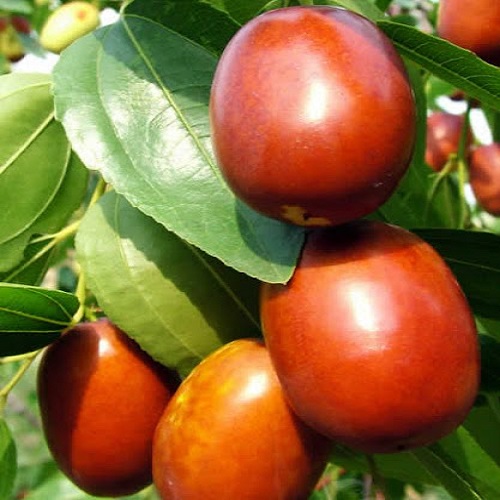
Hotan Jujube
6. Korla Fragrant Pears: Juicy Delights from the Mountain Foothills
In the fertile Yarkant River basin at the foot of the Tianshan Mountains lies Korla (Ku’erle), renowned for its “Korla Fragrant Pear.” These pears, shaped like elongated teardrops, come coated in pale green or yellow skin, often blushed with rose. Underneath is crisp, snow-white flesh, yielding an explosion of floral sweetness.
Features & Benefits
- Refreshing Juiciness: High water content makes every bite thirst-quenching.
- Medicinal Qualities: Tradition holds that Korla pears soothe sore throats, alleviate coughs, and promote digestion.
- Season: Late July through September.
Visitors can explore sprawling pear orchards, learn grafting techniques, and sample pears straight from the tree. China Dragon Travel arranges Korla Orchard Tours combined with local homestay stays, ensuring you experience both rustic charm and orchard-to-table freshness.
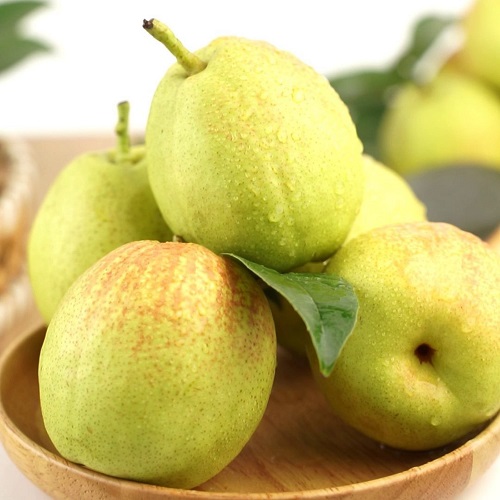
Korla Fragrant Pears
7. Tianshan Snow Lotus: The Alpine “King of Medicinal Herbs”
Growing only at altitudes above 3,000 meters on the rugged slopes of the Tianshan, Altai, and Kunlun ranges, the Tianshan Snow Lotus (Saussurea involucrata) earns its title as a “rare pride of Xinjiang.” Scant rainfall, fierce winds, and icy cold make its habitat inhospitable—hence its scarcity and premium price. In Traditional Chinese Medicine, Snow Lotus is revered for its anti-inflammatory, anti-fatigue, and anti-aging properties.
Why It’s Coveted
- Unique Medicinal Profile: Roots, flowering heads, and seeds all find use in herbal tonic blends promoting vitality.
- Limited Harvest: Harvested only one month per year (July–August), each flower must be hand-picked from craggy cliffs.
- Symbolic Beauty: White petals resemble a miniature lotus, evoking purity and resilience.
To ethically encounter this botanical treasure—without disturbing fragile alpine ecosystems – consider China Dragon Travel’s Tianshan Botanical Conservation Tour. Expert guides lead you to designated observation zones, explain local conservation efforts, and demonstrate how Snow Lotus is sustainably collected for herbal use.
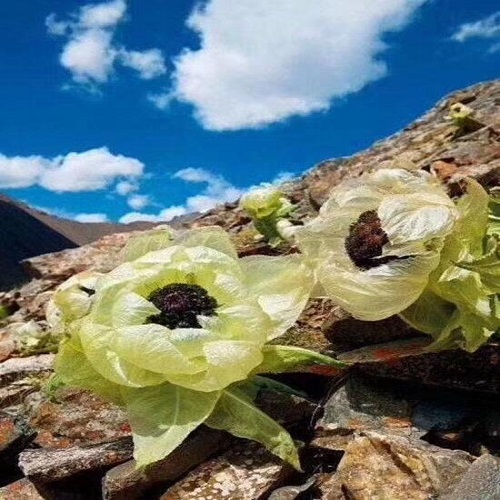
Tianshan Snow Lotus
8. Ili Beef Jerky: Savory Flavors of the Grasslands
The Ili River Valley’s lush meadows nurture cattle whose meat becomes the region’s signature beef jerky. Known locally as “Ili Rougan,” these strips of marinated beef integrate Uyghur spices—cumin, chili, garlic—and undergo a multi-step process: marination, slow smoking, and air-drying. The result is a tender-yet-chewy snack, redolent of pastoral grassiness and piquant warmth.
What to Expect
- Flavor Notes: A perfect balance of smokiness, gentle heat, and savory umami.
- Nutritional Highlights: High in protein, low in fat—ideal for trekking snacks or quick energy boosts.
- Shelf Stability: Can last months if stored properly, making it a traveler’s staple.
For a deeper dive, join an Ili Ranch & Jerky Workshop organized by China Dragon Travel, where you tour grazing fields, interact with local herders, and try your hand at shaping and smoking jerky strips in traditional ovens.
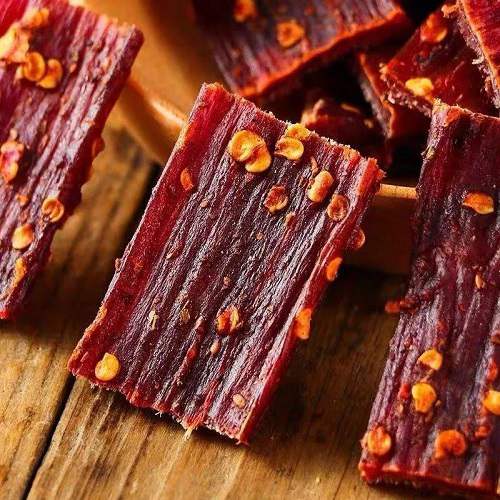
Ili Beef Jerky
9. Atlas Silk (Adras): Xinjiang’s Traditional Tie-Dyeed Fabric
Adras Silk—also called “Atlas Silk”—derives from the Uyghur word meaning “woven with dyed patterns.” Unlike printed or painted fabrics, Adras uses a resist-dye method: first, artisans tie or weave raw silk threads into intricate patterns, then dip them into natural dyes (safflower, walnut bark, tree flower), producing vibrant, jagged motifs that shimmer with depth. Each region in Xinjiang has its own signature color palette: Kashgar and Shache (Yarkand) favor bold reds, emerald greens, and golds; Hetian & Lop Nur styles lean toward monochrome or subtle earth tones.
Key Characteristics
- Handcrafted Distinction: Entirely woven by hand; some patterns require re-dyeing and re-weaving for clarity.
- Cultural Significance: Worn as traditional dresses (chapan, doppa), headscarves, or decorative wall hangings.
- Artisanal Heritage: Inscribed on China’s National Intangible Cultural Heritage list for its enduring legacy.
To master the basics of tying, dyeing, and weaving Adras Silk, take part in China Dragon Travel’s Silk Weaving Immersion. Under the guidance of Uyghur craftswomen, you’ll learn how to prepare natural dyes, tie-resist threads, and operate handlooms—resulting in a small keepsake you can proudly call your own.

Atlas Silk
10. Kashgar Melon (Yarkand/Changji Melon): Sweetness Carved by the Mountains
Kashgar (Kashi) and Yarkand regions at the southern edge of the Tarim Basin produce a highly revered variety of melon—sometimes labeled “China’s Melon King.” Often oblong with emerald-green stripes and golden flecks, Kashgar Melon boasts dense, white flesh that slakes thirst and leaves a lingering floral-sweet taste. The unique microclimate—hot days, cool nights, and water drawn from snowmelt—ensures concentrated sugars and intense aromatic compounds.
Unique Attributes
- Nutrient-Rich: Loaded with vitamins A, C, and dietary fiber; traditionally viewed as a cooling tonic in hot summer months.
- Varied Uses: Eaten fresh, pressed into juice, or pickled into tangy melon preserves.
- Harvest Window: Late July through early September—any off-season melon is likely imported or greenhouse-grown.
If you wish to wander through fields of trailing vines, inspect harvest techniques, and indulge in fresh-cut slices, coordinate with China Dragon Travel for a Southern Xinjiang Melon Harvest Journey – complete with local homestays and farm-to-table feasts.
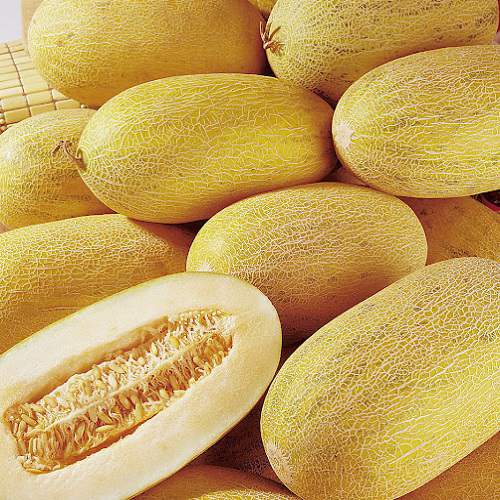
Kashgar Melon
Xinjiang International Grand Bazaar & Kashgar International Bazaar
For those keen to shop all Xinjiang specialties under one roof, head to the Xinjiang International Grand Bazaar in Urumqi and the historic Kashgar International Bazaar in southern Xinjiang.
- Xinjiang International Grand Bazaar (Urumqi):
- One of the world’s largest bazaar complexes, showcasing Uyghur architecture with soaring minarets and domed pavilions.
- Ideal for buying dried fruits (walnuts, almonds, raisins), fresh seasonal fruits, Hetian Jade sculptures, carved celadon, Adras Silk scarves, and hand-knotted carpets.
- Street stalls also serve freshly baked naan, grilled lamb skewers, polo rice, and local yogurt—offering a full sensory immersion.
- Kashgar International Bazaar (Kashgar):
- Often touted as Asia’s largest open-air market, its history stretches back over two millennia.
- Over 5,000 stalls flood daily with nearly 10,000 different items—from fresh apricots and pomegranates to leather goods, chiselled jewelry, and snug felt hats.
- Don’t miss the livestock market section, where local herders trade prized fat-tailed sheep and sturdy yaks.
For a curated shopping tour—including guided vendor introductions, price negotiation tips, and safe packaging—allow China Dragon Travel to handle logistics, language assistance, and transport.
Tips for Buying Authentic Xinjiang Specialties
Know What to Look For
- Familiarize yourself with the characteristics of genuine products (e.g., Hetian Jade’s milky luster, Adras Silk’s tie-dye intricacies).
- Use online resources or guidebooks to compare images and descriptions before departure.
Choose Reputable Vendors
- Stick to large bazaars like the Grand Bazaar (Urumqi) and Kashgar International Bazaar.
- When in doubt, ask for certificates of authenticity—especially for high-value items like jade or rare herbs.
Verify Rare Items
- For precious products (Hetian Jade, Tianshan Snow Lotus), request third-party appraisal or a lab report.
- Compare multiple shops and keep receipts for potential returns or verification.
Haggle Wisely
- Bargaining is a customary practice in Xinjiang markets. Begin at 50–60% of the initial asking price and negotiate up from there.
- Maintain respect—smile, be patient, and complement the craftsmanship. A friendly approach often yields the best deal.
Inspect Packaging & Shelf Life
- For dried fruits, nuts, and beef jerky, check production dates and packaging integrity. Avoid damaged or torn bags.
- Fresh fruits (melons, pears) should feel heavy for their size and have minimal blemishes. Consume or refrigerate promptly.
Payment Methods
- Most urban bazaars accept mobile payments (WeChat Pay, Alipay) and major credit cards.
- In smaller towns or remote stalls, cash (RMB) remains the preferred option. Carry a modest amount of cash to avoid inconvenience.
Transport & Storage Considerations
- Pack fragile items—jade figurines, silk scarves, and carpets—in bubble wrap or padded cases.
- For perishable items (fresh melons, pears), either consume locally or coordinate shipping through reputable couriers. Many hotels also offer storage boxes or chilled lockers.
Xinjiang’s rich tapestry of landscapes, history, and multiethnic cultures vibrates through each specialty—from the milky glow of Hetian Jade beneath the Kunlun Snowcaps to the honeyed sweetness of Turpan’s sun-dried grapes. Whether you’re drawn to the aromatic fields of Hami Melon, the shrines of Tianshan Snow Lotus, or the rhythmic clacking of looms weaving Adras Silk, there is a memento waiting to capture your heart and imagination.
For travelers eager to dive deeper—immersive farm visits, artisan workshops, secure shopping excursions, and hassle-free logistics – China Dragon Travel stands ready to design your ideal Xinjiang adventure. Reach out today and let us help you craft an unforgettable journey across China’s most legendary frontier.



